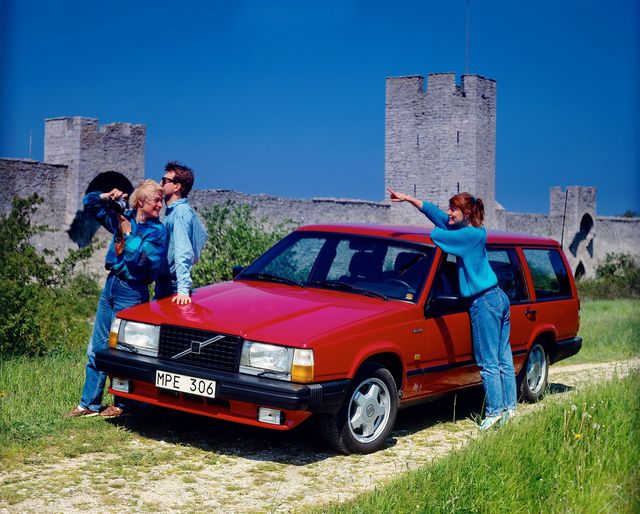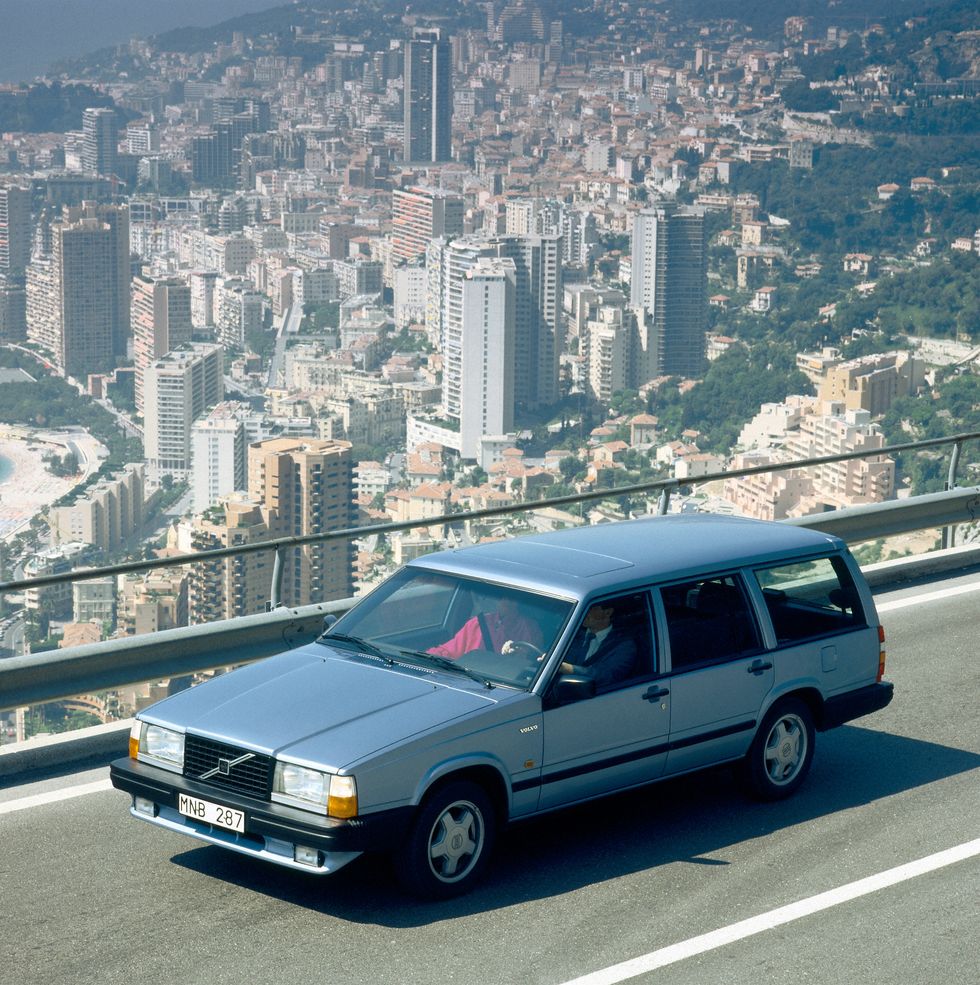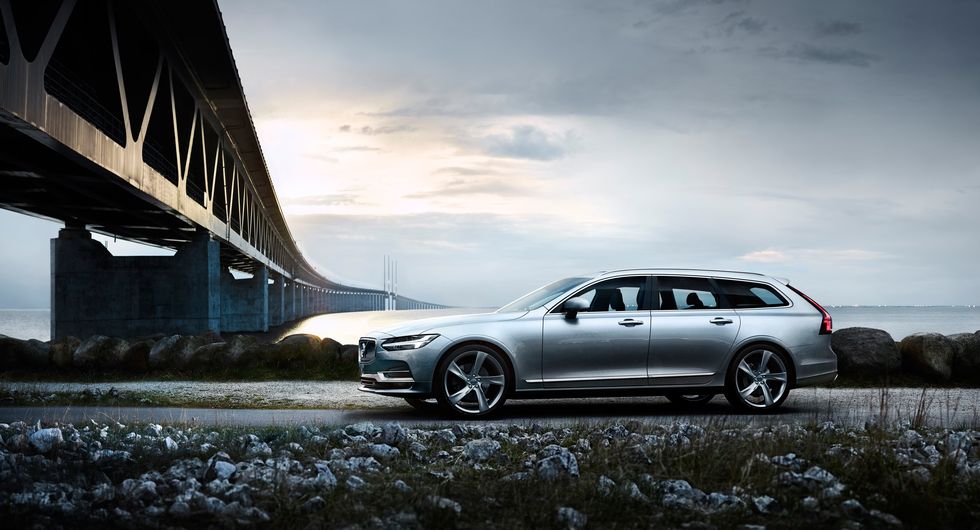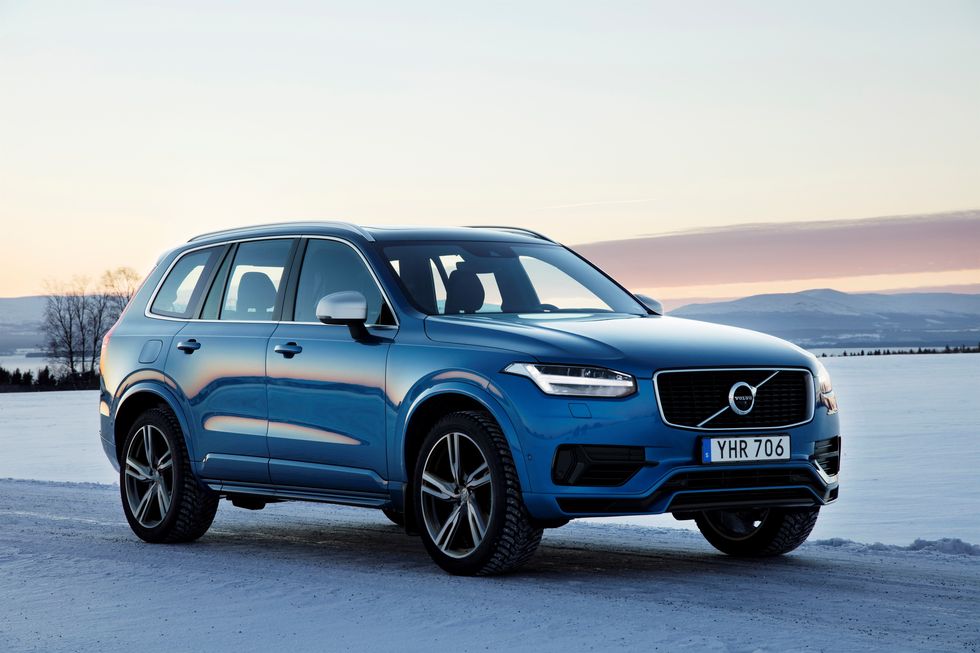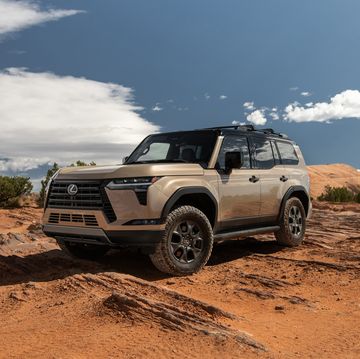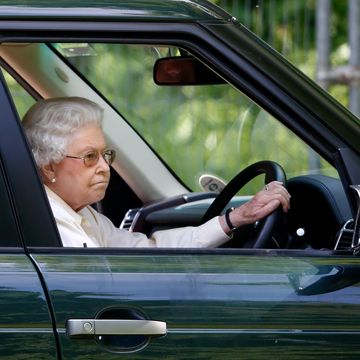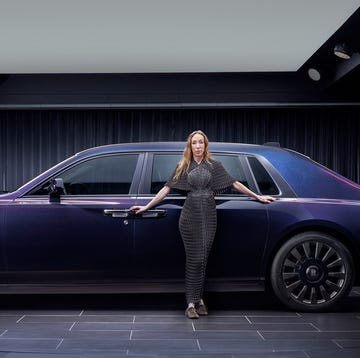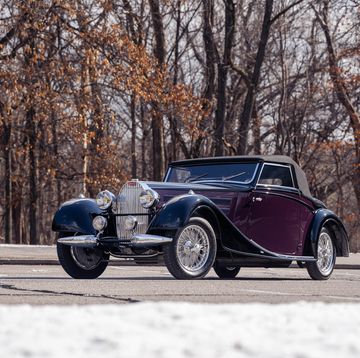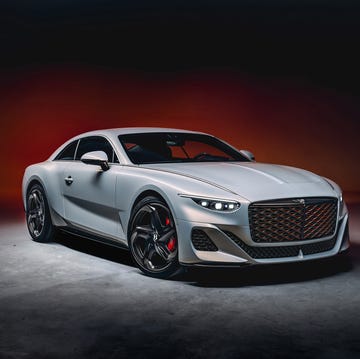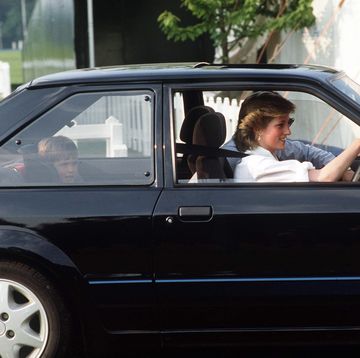For nearly an entire generation, this was the official car of childhood. Yes, the Volvo wagon has plied the streets of middle-class suburban America through wars, recessions, and the dawning of the crossover, and thus has rightfully earned its place in the grand vernacular of American stereotypes.
Stereotypes are fun, sometimes, as any 80s movie will tell you. And yes, if you want to talk stereotypes, nothing reflects the East Coast, Mid-Atlantic, New England nuclear family more than a Volvo in the driveway—the official car of argyle sweaters and two-story Colonials with manicured front lawns; of golden labs but not Rottweilers, of tenure tracks and NPR tote bags and dog-eared copies of boring global affairs magazines along with the resulting political opinions too polite to share in public.
Not yet, anyway. The official car of well-groomed childhoods from Barnstable to Montpelier, of three rows of seats and a rear-facing one, a car whose seeming sole purpose is to go from the garage to the school drop-off and the gas station and back. A car less flashy than a Mercedes but less weird than a Saab.
A solid choice. A safe choice.
And when the box finally gives up the ghost, it lingers on for just a little bit longer, on to the undergraduate parking lot of a private university before it finally goes to the Great Junkyard in the Sky, a dignified life.
There are two iconic Volvos. The first is the venerable 240, having been introduced the same year as Gerald Ford, and lasting until 1993, longer than most pet Labradors. The world's last-remaining concentration of 240s can now be found in Ithaca, New York, where each example is weighed down by ten pounds of COEXIST bumper stickers.
The second iconic Volvo is, in fact, a conglomeration of boxiness that blend into our ideal childhood ride: it began with the 740, introduced nearly the same year as Ronald Reagan, and lasted until the V70 of the mid-Nineties, though one can extrapolate this far later—to around the time when the world casted the station wagon asunder for its nemesis, the SUV. Park a 1982 Volvo 740, the first of its name, next to a V70 and other than a softening of the lines, there's hardly any deviation.
Good design, as the saying goes, is when nothing more can be taken out. So look at the examples above and below: a child could draw it without the aid of a ruler. Give a kid two Lego bricks and the precocious little tyke could replicate half a century's worth of Volvo products. It's an absurdly simple shape: proudly square, ruthlessly efficient, pared down to nothing but four wheels and three rows of seats.
It's an ode to rectangles. For years the only thing on a Volvo wagon that wasn't a rectangle was the diagonal line going through the grille. The only line that wasn't straight may as well have been the logo, the symbol for iron and Mars and masculinity alike.
Is the Volvo manly? Maybe, but certainly not in the shouty, compensatory way of a Ford Mustang. If one wishes to stereotype the terse and dry-witted Scandinavians who invented the Volvo, then one can look no further than to Jan Wilsgaard, the company's longstanding designer who once remarked of the 240: "It might be because the car is a little square and sluggish, just like the Swedes themselves."
Children of another generation may remember the wood-paneled dinosaurs of the Sixties and Seventies, the Vista Cruisers and three-row Pontiac Safaris that transported a bunch of unbelted kids through the age of oil crises. Volvo showed us what the Europeans had known all along. It shrunk the wagon down to practical size and somehow managed to make its basics even boxier.
So too children of the millennial generation will recall fond memories of seeing the backs of their 740s and 850s loaded up with our participation trophies we've earned. They'll probably remember the goofy little jump seats, all the way in the back, and making faces at the cars behind them. They'll remember the bizarrely shaped headrests that kind of resemble waffle fries. Maybe some of them learned to drive on one. Imagine a whole line of battleship-grey 740s, gently trudging through the snow of some Massachusetts town, then lining up in front of the front doors of your elementary school…
It's this purposefulness that carried the wagon to the end of the 20th century. And at the dawn of the 21st century, it all nearly fell apart.
The wagons got less boxy, less roomy, but more shouty. They became injected with that odious German affectation of sportiness, as if that would fool anyone other than testosterone-injecting Angry Dads who haven't yet traded in their Ford Explorers. (Again, stereotypes are fun!) The age of the SUV and then the crossover dawned, and Volvo wisely stepped out of the way. They gave us the XC90, which was rather good and praised by the media and immediately wiped away any remaining V70 sales. What remaining wagons the company did sell came with ten pounds of plastic in an attempt to look tough, but really just made it easy to remove the COEXIST stickers.
There's a new Volvo wagon now. It's quite the stunner. Modern cars may all look the same, all jagged lines and misplaced chrome spears, but it's heartening to know that with a newly invigorated Volvo, the new V90 still looks like a Volvo wagon.
But there's one caveat: it can only be special-ordered—virtually guaranteeing its obscurity on these shores. Who's going to go through that effort when you could have a (rather good, actually) XC90?
And that's a shame. The more we age, the more we make supposed progress over the years, we begin to turn inward. We come naturally to the revelation that adult life sucks. In our childhoods, we didn't have to worry about a damn thing. We've already embraced the 80s; now, we're in the middle of rediscovering the 90s. After all, nostalgia works in cycles of 20 years, and the circle's come around for N'Sync, flip phones, Gilmore Girls revivals on Netflix—and so too the venerable Volvo wagon will soldier on.
